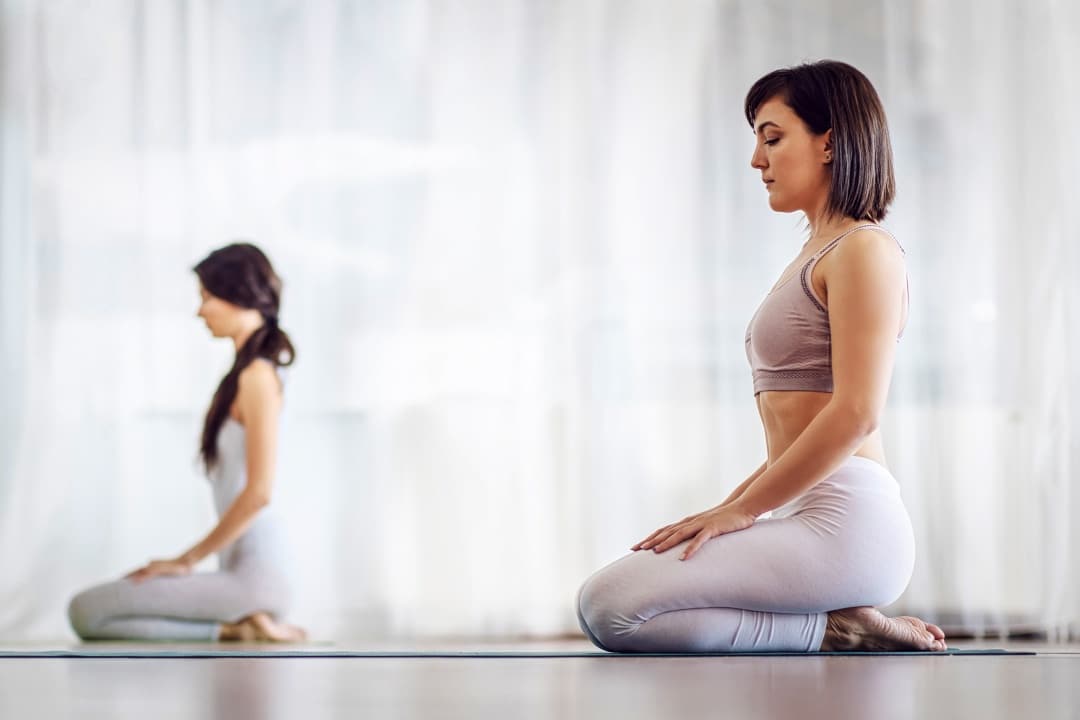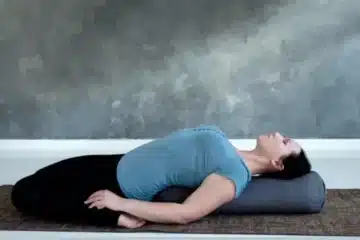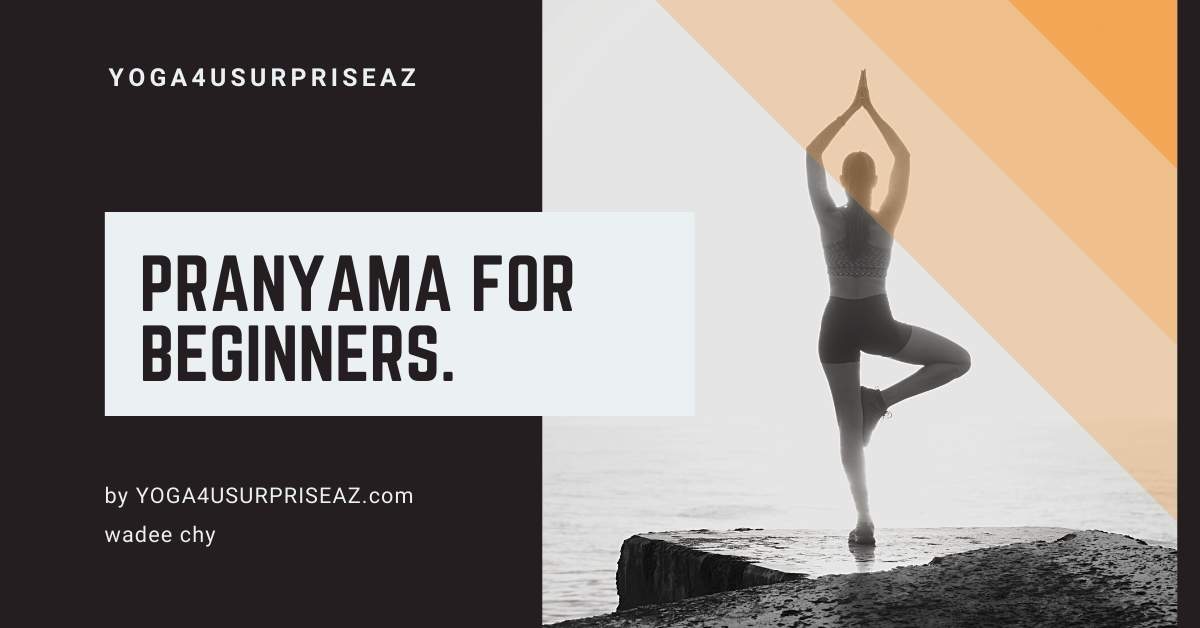Posture Perfection: Gentle Yoga Stretches for Alignment provides effective exercises to improve posture and alignment. These gentle yoga stretches focus on enhancing body alignment and posture.
Whether you sit at a desk all day or just want to improve your posture, incorporating these gentle yoga stretches into your routine can make a significant difference. In addition to promoting better posture, these stretches can also help alleviate tension and improve overall flexibility.
By taking a mindful approach to your body’s alignment, these gentle yoga stretches can lead to better posture and an overall sense of well-being. So, if you’re ready to prioritize your posture and alignment, incorporating these gentle yoga stretches into your daily routine can be a game-changer.
Why Posture Matters
Having good posture is not just about looking confident and poised. It plays a vital role in our overall well-being and impacts our health in various ways. In this section, we will explore the health benefits of good posture as well as the detrimental effects poor posture can have on our bodies.
The Health Benefits Of Good Posture
Proper posture can positively affect our physical health, mental well-being, and even our appearance. When we maintain correct alignment, our bodies function optimally, resulting in numerous benefits:
- Better Breathing: Good posture allows the lungs to fully expand, enhancing oxygen intake and promoting better respiratory function, which is essential for overall health.
- Reduced Musculoskeletal Pain: Correct posture helps to distribute our body weight evenly, preventing excessive strain on our muscles and joints. This can alleviate chronic pain in areas such as the back, neck, and shoulders.
- Increased Energy Levels: When we sit or stand with proper posture, it improves blood circulation and allows vital nutrients to reach our organs and tissues more efficiently. As a result, we may experience increased energy levels and improved focus throughout the day.
- Enhanced Digestion: Proper alignment of the spine and torso can aid in optimal digestion. When we slouch or slump, it can compress our internal organs, hindering digestion and leading to discomfort or digestive issues.
- Boosted Confidence: Good posture not only contributes to a more attractive appearance but also influences our self-perception. Standing tall and balanced can make us feel more confident, assertive, and capable.
- Improved Mood and Mental Health: Our body language affects our mood and emotions. Sitting or standing up straight can help us feel more positive, reduce stress levels, and improve overall mental well-being.
The Impact Of Poor Posture On The Body
Poor posture, on the other hand, can have detrimental effects on our health. It can lead to a range of issues, including:
- Muscle Imbalances: Bad posture can cause certain muscles to become weak or tight, resulting in imbalances that can lead to pain and dysfunction.
- Spinal Misalignment: Slouching or hunching can gradually shift the alignment of our spine, causing discomfort and potentially leading to conditions such as scoliosis.
- Decreased Lung Capacity: When we consistently have poor posture, it restricts the expansion of our lungs, reducing our lung capacity and potentially compromising respiratory function.
- Joint Compression: Incorrect posture can put excessive pressure on our joints, leading to wear and tear, inflammation, and conditions such as arthritis.
- Headaches: Poor posture can contribute to tension headaches, as it can strain the muscles in our neck and upper back.
- Reduced Confidence: Slumping or slouching can negatively affect our self-esteem and body image, contributing to feelings of insecurity and decreased confidence.
Yoga Stretches For Improved Alignment
Improve your posture with gentle yoga stretches that focus on alignment. Discover how these simple movements can help you achieve perfect posture and alleviate discomfort.
Yoga Stretches for Improved Alignment Maintaining proper alignment is crucial for overall posture and physical well-being. Practicing gentle yoga stretches can help improve alignment, relieving tension and promoting better posture. Let’s explore some key yoga poses that focus on aligning the body, promoting balance and flexibility.
Mountain Pose (tadasana)
In Mountain Pose, stand tall with feet hip-width apart, aligning the ankles, knees, and hips. Engage the core and relax the shoulders. This pose helps to promote proper posture, strengthen the legs, and align the spine, fostering a sense of stability and strength.
Cat-cow Pose (marjaryasana-bitilasana)
Cat-Cow Pose involves moving between arching and rounding the back while on all fours, promoting spinal flexibility and alignment. This gentle, flowing movement eases tension in the spine and helps align the vertebrae, fostering a healthy back.
Child’s Pose (balasana)
In Child’s Pose, kneel and sit back on your heels, reaching your arms out in front, allowing the spine to lengthen and the hips to release tension. This pose promotes relaxation, stretches the spine, and encourages proper alignment of the back and neck.
Downward-facing Dog Pose (adho Mukha Svanasana)
Downward-Facing Dog Pose involves lifting the hips and extending the arms and legs, forming an inverted V-shape. This pose stretches the entire body, particularly the spine and hamstrings, promoting better alignment and relieving tension in the back and neck. Incorporating these gentle yoga stretches into your routine can enhance alignment, relieve tension, and improve posture, ultimately contributing to overall physical well-being.
How To Perform Each Stretch Safely
Proper alignment and technique are crucial when practicing yoga stretches for posture improvement. Performing each stretch safely requires attention to detail and a focus on body awareness. By understanding the proper alignment and technique, as well as modifications for beginners or those with injuries, individuals can maximize the benefits of these gentle yoga stretches for alignment.
Proper Alignment And Technique
Ensuring proper alignment and technique is essential for safely performing yoga stretches. Each stretch should be approached mindfully, paying attention to the positioning of the body and the sensation of the stretch. Focus on maintaining elongation through the spine and engaging the core muscles to provide support and stability during each movement. Take slow, deep breaths throughout the stretches to enhance relaxation and deepen the stretch.
Modifications For Beginners Or Those With Injuries
Beginners or individuals with injuries should make modifications to the yoga stretches to ensure their safety. This may include using props such as blocks or blankets to provide support and reduce strain on the body. Additionally, gentler variations of the stretches can be practiced, gradually building strength and flexibility over time. It’s important for individuals to listen to their bodies and avoid pushing beyond their limits, especially when dealing with injuries.

Credit: www.amazon.com
Incorporating Posture-focused Yoga Into Your Routine
Incorporate posture-focused yoga into your routine with gentle stretches that promote alignment. Improve your posture through targeted exercises designed to strengthen and lengthen key muscles.
Creating A Dedicated Practice
Committing to a regular yoga practice is key to incorporating posture-focused yoga into your routine. By dedicating specific time each day, you can gradually improve your alignment and posture. Begin by setting aside at least 10 minutes every morning or evening for your yoga practice.
A dedicated practice allows you to focus solely on your posture and alignment without distractions. Find a quiet, peaceful space in your home where you can practice without interruptions. Lay out your yoga mat and gather any props you may need, such as blocks or straps, to support your practice.
Incorporating a breathing technique, such as deep belly breaths or Ujjayi breath, into your practice can help deepen your mind-body connection and enhance the benefits of each posture. Remember to stay present and listen to your body as you move through each pose.
Integrating Posture-focused Yoga Into Existing Workouts
If you already have an established fitness routine, integrating posture-focused yoga can complement your existing workouts and help improve your alignment. Whether you enjoy cardio exercises, strength training, or high-intensity workouts, adding a few yoga stretches can make a significant difference.
Consider incorporating yoga poses into your warm-up and cool-down routine. These stretches can help prepare your body for exercise and improve post-workout recovery. For example, after a run or intense workout, perform gentle spinal twists or forward folds to release tension in the muscles and promote proper spinal alignment.
In addition to warm-up and cool-down stretches, you can also include short yoga sessions throughout the week. Choose poses that target specific areas of the body where you may have alignment issues, such as the shoulders, hips, or spine. By regularly practicing these targeted poses, you can gradually correct imbalances and improve your overall posture.
Tips And Tricks For Maintaining Good Posture
Having good posture is essential for overall health and well-being. It not only enhances your physical appearance but also prevents discomfort and pain in the long run. Maintaining good posture may seem challenging, especially with our sedentary lifestyles and daily activities that involve prolonged sitting or hunching over electronic devices. However, with a few simple tips and tricks, you can improve your posture and enjoy the many benefits it brings. Read on to discover some practical strategies for maintaining good posture throughout the day.
Ergonomic Adjustments For Daily Activities
Whether you’re working from home, sitting at a desk all day, or engaging in other daily activities, making ergonomic adjustments can make a significant difference in your posture. By optimizing your environment and how you perform everyday tasks, you can reduce strain on your body and maintain good alignment. Here are a few ergonomic adjustments to consider:
- Ensure that your chair and desk are at the correct height to support proper posture.
- Position your computer monitor at eye level, directly in front of you, to prevent neck and back strain.
- Use a supportive chair with proper lumbar support to maintain the natural curve of your spine.
- Take regular breaks to stretch and move around, avoiding sitting in one position for too long.
- When lifting heavy objects, remember to lift with your legs and not your back, maintaining a straight spine.
Building Awareness And Mindfulness Of Posture
Developing awareness and mindfulness of your posture is essential in maintaining good alignment. Many of us tend to slouch or adopt poor posture habits without even realizing it. By practicing mindfulness, you can catch yourself in these moments and make necessary adjustments. Here are a few strategies to help you build awareness of your posture:
- Set reminders throughout the day to check and correct your posture.
- Engage in regular posture-checking exercises, such as sitting up straight and aligning your shoulders with your ears.
- Practice yoga or other activities that focus on posture and body alignment.
- Use a mirror or record yourself to observe your posture and make necessary adjustments.
Maintaining good posture is crucial for your overall well-being and should be a priority in your daily routine. By implementing these ergonomic adjustments and building awareness of your posture, you can make significant strides towards achieving excellent alignment and reaping the benefits of proper posture.
:max_bytes(150000):strip_icc()/Yoga-Poses-for-Beginners-GettyImages-961084648-b6270ad0ca174937a91b4b4d8e774974.jpg)
Credit: www.shape.com
Frequently Asked Questions For Posture Perfection: Gentle Yoga Stretches For Alignment
How Can Yoga Improve Posture Alignment?
Practicing yoga regularly can improve posture alignment by strengthening the muscles that support the spine, promoting better posture habits, and increasing body awareness and mindfulness. Yoga also helps release tension in the body, allowing for better alignment and a more natural posture.
Which Yoga Stretches Are Best For Improving Posture?
Some of the best yoga stretches for improving posture include Tadasana (Mountain Pose) to align the spine, Bhujangasana (Cobra Pose) to strengthen the back muscles, and Utthita Trikonasana (Extended Triangle Pose) to open the chest and improve overall alignment. These poses help stretch and strengthen key muscles related to posture.
Can Yoga Help Relieve Back Pain Caused By Poor Posture?
Yes, yoga can be beneficial in relieving back pain caused by poor posture. Specific yoga poses and stretches help elongate the spine, strengthen the supporting muscles, and release tension in the back. Regular practice can help alleviate back pain and improve overall posture.
Are There Any Precautions To Consider When Practicing Yoga For Posture Alignment?
When practicing yoga for posture alignment, it’s important to listen to your body and never force any poses. Start with gentle stretches and gradually increase intensity. Avoid overextending the spine or putting excessive strain on the neck. If you have any existing medical conditions, consult with a healthcare professional before starting a yoga practice.
Conclusion
Incorporating gentle yoga stretches into your daily routine can greatly improve your posture and alignment. These simple exercises help to strengthen and stretch the muscles that support proper posture, promoting a healthy spine and reducing the risk of pain and discomfort.
By focusing on your body and committing to a regular practice, you can achieve posture perfection and enjoy the benefits of improved alignment for years to come. So why wait? Start practicing these yoga stretches today and take the first step towards a healthier posture.



